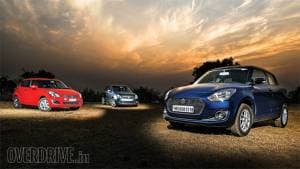2020 Hyundai Grand i10 Nios Turbo road test review
For a country where the most popular cars month over month are hatchbacks, we've had precious few of the hot, or even lukewarm, variety. Small, light cars that can put a smile on your face, quick. That's not to say manufacturers haven't tried before. Hatches like the Tata Tiago JTP and Maruti Suzuki Baleno RS are relatively recent memories; if recently discontinued ones. Most times, it's been the diesel versions of regular hatchbacks, with all that extra torque, that's brought enthusiasts some hope, with cars like the erstwhile VW Polo 1.2 GT TSI, and now, Polo 1.0 TSI being the only representations of petrol power in the race.
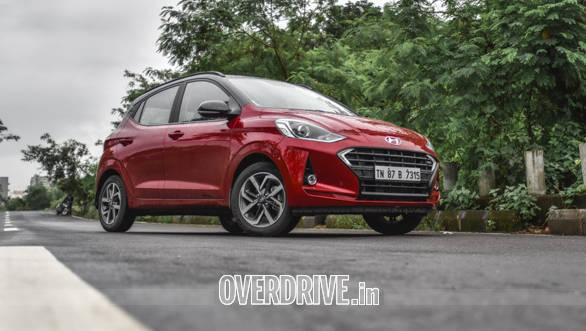
Hyundai's hoping to change that, by giving the small and light Grand i10 Nios the 1-litre turbo-petrol engine (detuned from its first application in the Venue Turbo), with 50 per cent more torque and 20 per cent more power compared to the standard Nios with its 1.2-litre engine. Can the 2020 Hyundai Grand i10 Nios Turbo, priced at Rs 7.7 lakh (ex-showroom) be the relatively hot hatch that's within reach of the average enthusiast?
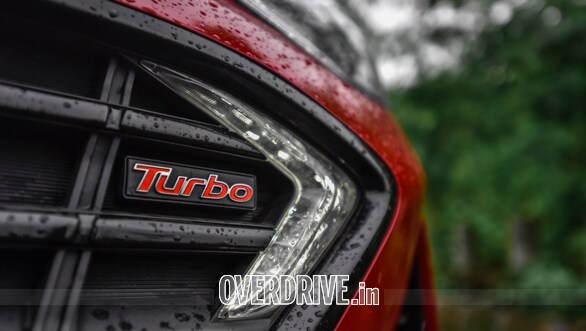
How does it look?
First things first, the Nios Turbo looks exactly like the regular Nios, also available with a blacked-out grille in certain colours. Still, it's quite a sharp looker, with its aggressive front end and creases in all the right places. The rear isn't quite as distinctive but its proportions are pleasing overall. You can tell the Turbo from the badges on the grille and on the tailgate. Its fiery red paint and black roof, a combination only available with this engine, is another tell, while you can also have the Turbo in teal or white.
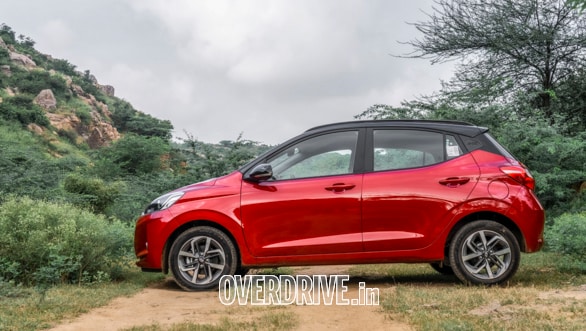
If we're allowed to be greedy, a different set of wheels with wider rubber, wider than the skinny 175/60 R15 rubber the Nios Turbo gets, would've been just the distinction it needs to seal the deal. Internationally, there's even an N Line model with the same powertrain in the same tune, but with more aggressive bodywork and twin exhaust tips. We hope Hyundai thinks it makes sense to bring its N performance brand to India at some point. Fingers crossed.
What about the interiors?
Like certain variants of the regular Nios, the Turbo gets all black interiors with either teal or red inserts depending on the colour you choose. It's suitably sporty and it's a well-made cabin with plenty of utility. Space at the rear is more than adequate too. And as we found in our comparison test between the Nios AMT and the Swift AMT, it's a more comfortable rear bench as well.
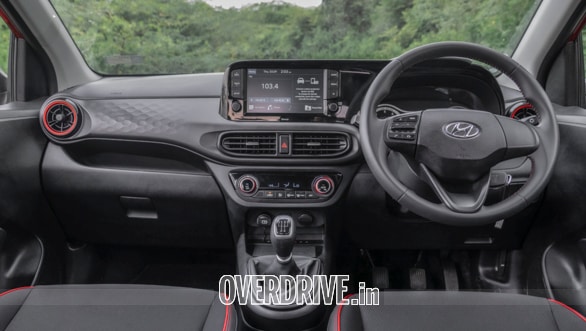
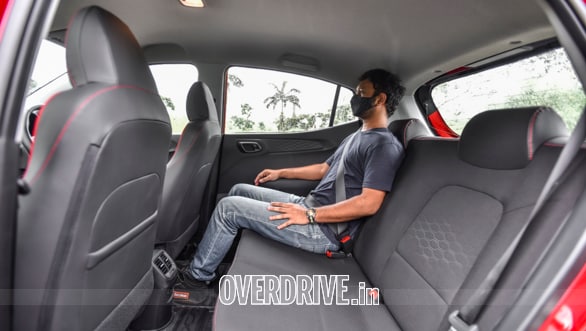
Being based on the second from top Sportz variant, the Nios Turbo has a fairly long features list including keyless entry, auto climate control, wireless phone charging, 8-inch touchscreen infotainment with Apple CarPlay and Android Auto, reversing camera and sensors and two airbags. Largely, what's missing compared to the top Asta variant is push button start, and a rear wiper. The latter is what you'll end up missing the most on a really rainy day on the highway, where the rear windscreen tends to get misted up road dirt on it. But you're here to see how the Turbo drives and it's been worth the wait.
How does it drive?
Before we get to how quick the Nios Turbo is (spoiler: it's very quick!), you'll appreciate how smoothly (and quietly) it gets off the line, and with zero need to slip the clutch or feed in revs to prevent the feeling of the engine stalling, a characteristic trait of these small-capacity turbo-petrol engines. There's also the distinct feeling that this 998cc, three-cylinder engine, 100PS is better suited to the Nios, than any of the other cars we've tried it in before the Aura Turbo, Venue Turbo and Verna Turbo. That's even considering that this engine makes 20PS more in the Venue and Verna! That's down to the Nios being the lightest of the three, but with the same 172Nm of torque. The Nios Turbo weighs 979kg at the kerb, though the Aura only adds 17kg in its stubby boot, versus between 175-216kg for the other two.

That gives the Nios Turbo a respectable 102PS/tonne power-to-weight ratio, which matches the 1,072kg Polo 1.0 TSI's figure. Importantly, the Nios Turbo feels quick, picking up pace well even when not wringing it out, thanks to relatively tall gearing in its 5-speed gearbox that gives you a wide spread of revs to play with in each gear, without the engine begging for an upshift. When you do go for it, the Nios Turbo will surprise in just how quickly numbers pile onto the digital speedo, even though the way it delivers power is quite linear, certainly more so than in the Venue Turbo, which feels like it's straining at the leash at times. Thanks to that tall gearing, the Nios Turbo clears the 100kmph mark in second, posting a fabulous 9.7s time for the run from standstill!
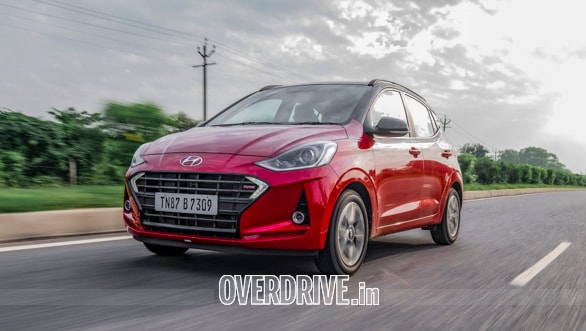
That makes it a second quicker than the Venue Turbo, and two seconds quicker than the Nios 1.2-litre petrol, both which needed a shift into third to clear the tonne. Driving all three back-to-back, it's easy to appreciate the gearing and torque spread in the Nios Turbo. Extremely drivable, throttle response is as good as the Nios 1.2, with the added bonus of that swell of torque which you can feel come on strong around 2,000rpm, staying flat till just over 5,000rpm. The redline's at 6,600rpm but you'd likely want to short-shift to get the most out of it. Given the Nios Turbo's lightness on its feet, the three-cylinder thrum feels more natural, and somehow even sounds more fitting, making you want to row through the gearbox.
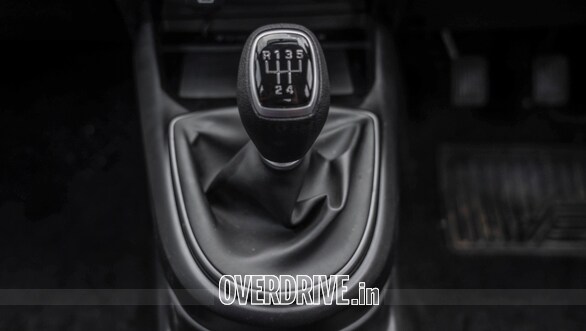
This 5-speed gearbox isn't the same as on the 1.2-petrol. It's closer to the Venue's 6-speed, with the reverse lockout next to first instead of below fifth. Out on the highway, it's almost exactly as relaxed as the Venue, running at 2,600rpm at a steady 120kmph, despite missing that extra gear. We got 20.4kmpl in our efficiency testing on the highway, with 14.7kmpl in the city. These figures are quite close to the 1.2-litre Nios, showing that the extra performance doesn't really come with a catch.


Hyundai also say they've tweaked the steering and suspension on the Nios Turbo to make it feel more sporty, and a bit of the low-speed stiffness in the ride we've felt before feels entirely welcome here, with the added advantage of a smidge less rebound over speedbreakers. Altogether, it makes for a more tied-down feeling car. The biggest surprise is in how the steering weighs up when you're cornering it feels precise, natural and quite direct. I know it's a Hyundai. But whatever tweaks have been made has resulted in a car that feels confident when you're chucking it into a corner, and you can feel the car rotate around the apex without feeling like it wants to switch ends on you. I really can't wait to see what wider rubber can do for this car! It'll also probably help the braking performance, which hasn't been the Nios or Aura's strong point. Both have the tendency to go light at the rear under heavy braking, though the Nios' 100-0kmph braking performance of 43.1m and 3.1s is expected for the segment.
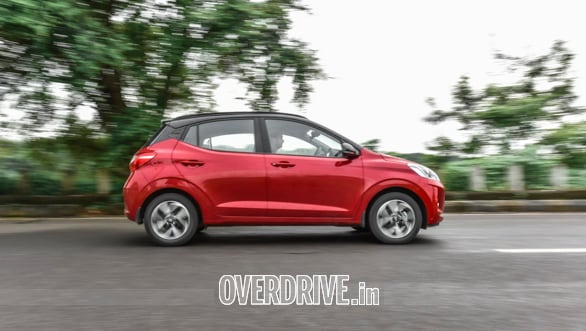
Verdict
Just for the explosive performance and character of this car it's worth the asking price, which at Rs 7.7 lakh (ex-showroom) is just about a lakh of rupees more than a corresponding Sportz variant with the not-very-exciting 1.2 Kappa engine. Its competition (the size-larger VW Polo 1.0 TSI) is available in a lower trim at around the same price as the Nios 1.2, while the higher-specced Highline Plus isn't a lot more money. That's a car that's definitely getting on in years, even if it does have its own advantages. A small, light hatchback with great performance and everyday usability is exactly what the average enthusiast has been asking for, and the answer seems to have come in the most unlikely of packages the Hyundai Grand i10 Nios Turbo.
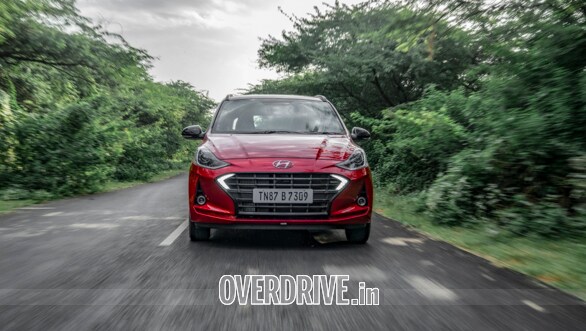
Watch our video review of the Hyundai Grand i10 Nios Turbo here:
Also read,
Comparison test: Hyundai Grand i10 Nios AMT vs Maruti Suzuki Swift AMT
Hyundai Grand i10 Nios first drive review
Hyundai Grand i10 N Line variant spotted
Starts Rs 4.98 Lakhs
1186cc
Manual
75
194
24.95 Kmpl
Starts Rs 5.05 Lakhs
998cc
Manual
75
171.61
20.7 Kmpl
Starts Rs 6.35 Lakhs
1197cc
Manual
90
113
22.94 Kmpl
Starts Rs 5.73 Lakhs
1197cc
Automatic
89.73
113
23.76 Kmpl
Starts Rs 4.6 Lakhs
1199cc
Automatic
-NA-
113
-NA-


